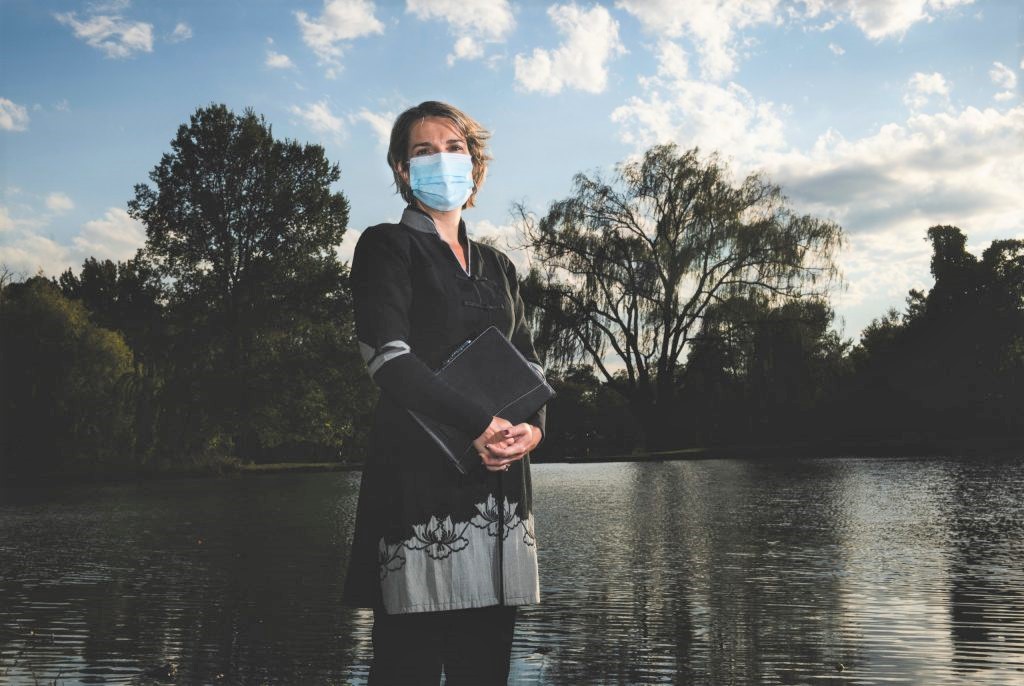
At the edge of a retreating glacier, bedrock terrain that has been hidden under layers of ice is seeing light for the first time in several hundred years. On mountain peaks, trees experiencing warmer weather are gradually moving higher than established tree lines. Along Virginia’s coast, sea levels are rising by as much as 1 inch every four years.
These seemingly small changes to our landscapes are the frontiers where two faculty members in the College of Natural Resources and Environment’s Department of Geography are investigating how climate change will impact both the natural world and the communities where we live.
Professor Lynn Resler researches high elevation ecosystems in North America, studying the dynamics that contribute to alpine tree line vegetation change. An ecological biogeographer, Resler examines current ecological processes taking place in remote locations.
On Virginia’s coasts, new lines of inquiry are also being fueled by and necessitated by climate change. As sea levels rise and storms become more frequent and severe, there is an urgent need to understand community-scale responses to accelerating coastal risks. In Virginia, Assistant Professor Anamaria Bukvic works with stakeholders to capture their experiences with coastal flooding and the ways they are coping with it, to better inform adaptation and resilience policies and programs.
Resler, who has nearly 20 years of field experience working above the tree line in the Rocky Mountains as well as high elevation peaks in the Appalachian Mountains, has shown that vegetation characteristics in alpine environments are informed by a complex interplay between terrain topography and interactions taking place between plants and pathogens.
One example can be found in whitebark pine forests in the Rockies, where Resler and her collaborators provided crucial research on the spread of white pine blister rust, caused by an invasive fungal pathogen that moves from gooseberry or currant plants to white pines. While other studies suggested that high-altitude pines in cold, dry climates wouldn’t be affected by the fungus, Resler was able to document the spread of the blight above the tree line.
More recently, Resler, who teaches courses in biogeography and mountain geography, has been researching ecosystems that develop as land becomes exposed in the wake of glacier melt in Montana’s Glacier National Park.
As a human geographer, Bukvic studies interactions between people and places using mixed methods, such as geospatial analysis, interviews and surveys. She notes that the coronavirus pandemic has presented an obstacle in her efforts to interact with stakeholders.
“A significant portion of my work is done in person with communities and people,” she said. “When we learned this past spring that we could no longer collect data in person, we had to quickly adapt and move all of our primary data collection efforts to different modalities, like mail and online surveys and interviews via Zoom. The silver lining is that COVID-19 has inspired us to innovate and develop new and complementing ways to conduct our research.”
Bukvic further studies the impacts of recurrent or nuisance flooding on households’ decisions to consider relocation.
Both Bukvic and Resler recognize that the Department of Geography has a crucial role to play in bettering our understanding of the impacts of climate change in both the natural world and the human one.
“Our students are increasingly aware of emerging climate change issues and are interested in finding solutions for some of the pressing challenges that are already affecting natural, built, and human coastal systems,” Bukvic said. “We have a unique opportunity to shape a new workforce of geographers who are equipped with skills and knowledge to engage in a dialogue on coastal resilience and to actively influence the future of our coasts.”
“I love to help students see the big picture, and field experiences are one of the best ways to achieve this goal,” Resler said. “I think it’s important to help them navigate broad-concept critical thinking while providing them with hands-on, course-relevant information.”


